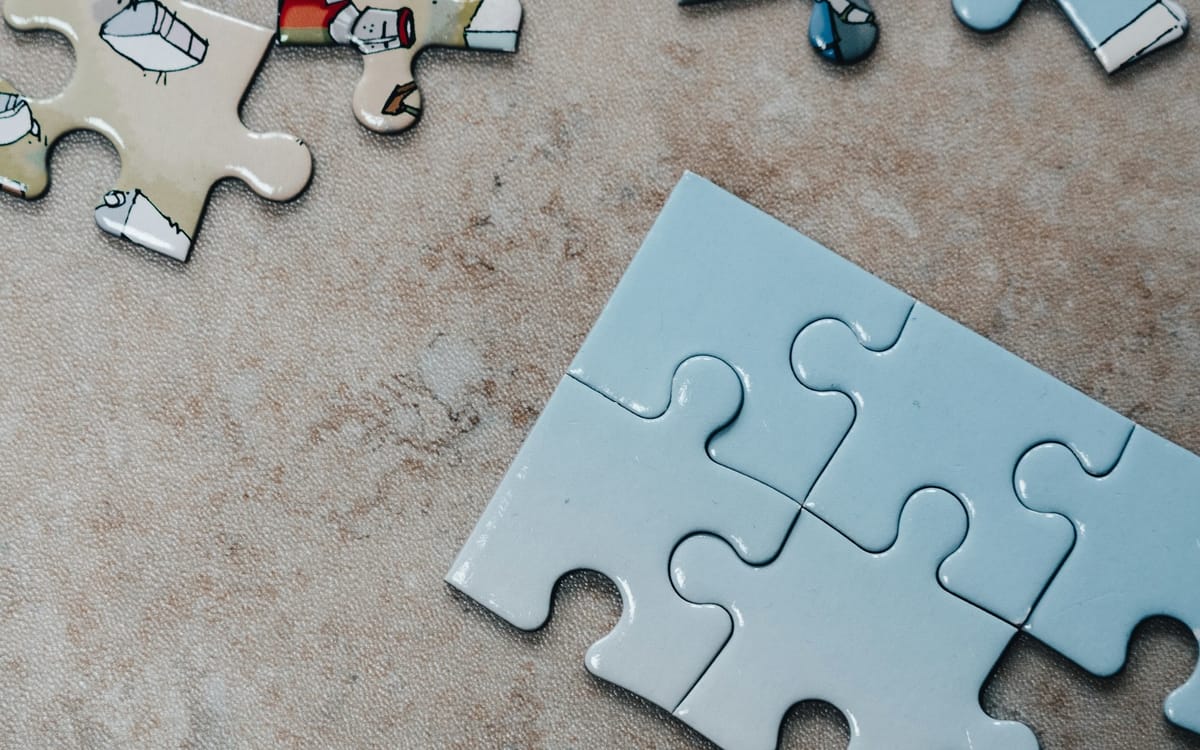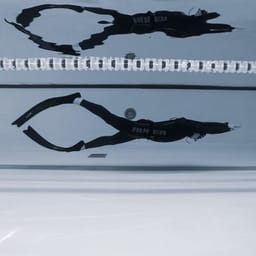How could you start your freediving journey
Freediving combines mental focus, physical training, and a deep connection with your body. This beginner-friendly guide explains how to start safely, focusing on pool training and the basics of Dynamic No Fins (DNF) to build technique, relaxation, and breath control.

If you’ve heard about freediving from colleagues, seen it on TV, or come across it on social media, you might be wondering how to get started. Freediving is a fascinating sport that combines mental focus, physical training, and a deep connection with your body.
Here’s how my journey began, and why I think it’s a good way to approach this discipline.
No Shortcuts in Freediving
Freediving is unlike many other sports because safety is not optional—it’s a fundamental principle. Progress in freediving takes time, structured training, and a solid understanding of your body and mind. Your body needs to adapt to the stress of breath-holding and learn how to manage it effectively. This is why rushing into deep dives or long underwater distances is dangerous and counterproductive.
The good news is that with proper training, patience, and a focus on safety, anyone can start freediving and see remarkable progress.
Starting with Pool Freediving
For most beginners, pool freediving is the best place to start. It’s more accessible than open-water freediving, as swimming pools are available in many locations, unlike warm, clear blue water with depth.
Pool freediving, especially in the discipline of dynamic no fins (DNF), is an excellent introduction to the sport. It requires minimal equipment and focuses on developing your body and mind through consistency and proper technique.
While other freediving disciplines like dynamic with bifins or monofin require expensive equipment (costing $500-$1,000 for quality gear), DNF allows you to start with just a swimsuit, cap, nose clip, and goggles.
Dynamic No Fins: A Demanding and Pure Discipline
Dynamic No Fins (DNF) is one of the most challenging and rewarding disciplines in freediving. Unlike other forms of dynamic apnea, DNF relies solely on your body for propulsion—no fins, monofins, or external equipment to aid movement. Progress comes from a combination of precise technique, body strength, and controlled breath-holding.
In DNF, propulsion is achieved through a combination of powerful leg kicks and arm strokes, followed by a glide phase where momentum carries you forward. Each movement must be deliberate and efficient to minimize energy use and maximize distance. This rhythm emphasizes smooth transitions, relaxed motion, and a strong connection to the water.
The lack of external assistance makes DNF a highly demanding discipline. It forces divers to focus on every detail, from streamlining their body to refining their gliding technique. Mastering DNF not only builds physical and mental endurance but also highlights the fundamental principles of freediving: efficiency, relaxation, and self-awareness.
Essential elements of DNF technique
How Pool Training Enhances Freediving Skills
Pool training, especially in disciplines like DNF, is a vital component of building the skills needed for all aspects of freediving. While the ultimate goal for many freedivers is to explore depth in open water, the controlled environment of a swimming pool is ideal for refining technique and developing core skills.
Mastering Technique and Gliding
DNF is all about efficiency. Pool training allows divers to perfect their technique by focusing on:
- Streamlining the body to minimize drag.
- Synchronizing strokes and kicks to create maximum propulsion with minimal effort.
- Practicing gliding, which conserves energy and helps develop a smooth, relaxed swimming style.

Freediving efficient glide
These technical refinements carry over into open-water freediving, where energy conservation is crucial for both safety and performance.
Building Relaxation and Mental Resilience
Relaxation is a cornerstone of freediving. The controlled, repetitive nature of pool training makes it an excellent environment to practice staying calm underwater.
- DNF sessions encourage a meditative state, helping divers remain focused and relaxed during long breath-holds.
- Over time, this practice builds mental resilience, enabling divers to face challenges like depth and longer dive times with confidence.
If you want to read more check out my recent post:

Freediving Mental Training
Improving Breath-Hold Capacity
DNF training pushes divers to optimize their oxygen use. The slow, deliberate movements in this discipline train the body to manage limited oxygen supplies effectively, improving both static and dynamic apnea performance.
Staying Calm Underwater
As divers push their limits in the pool, they learn to manage discomfort and the urge to breathe. This skill is critical for all freediving disciplines, where maintaining calmness underwater is key to safe and successful dives.
Experiencing the Pleasure of Gliding
One of the unique joys of DNF is the sensation of levitating in the water. The effortless glide after each stroke creates a feeling of freedom and connection with the water. This pleasure transforms training sessions into a form of underwater meditation, making DNF both challenging and deeply rewarding.
By focusing on technique, relaxation, and breath control, pool training helps divers develop a solid foundation for freediving. The skills honed in the pool are essential for progressing in depth disciplines and other dynamic techniques, making pool training an integral part of any freediver’s journey.
Taking a Freediving Course
One of the best steps for beginners is to take a freediving course. Organizations like Molchanovs, SSI, and AIDA offer courses designed to introduce you to the basics of apnea, the mammalian diving reflex, and your body’s built-in mechanisms that help you hold your breath longer. Most importantly, these courses teach safety protocols and basic rescue techniques that are critical in this sport.
During the course, you’ll learn to respect the safety rules that are vital in every freediving session.
The Importance of a Buddy
A trusted and certified buddy is your most important safety tool. I would never train with someone who is untrained or uncertified. Lifeguards at the pool are helpful, but they cannot replace the role of a dedicated freediving buddy.
Ideally, you should build a small group of like-minded freedivers who share similar goals and availability. Consistency and collaboration with your group will help you train more effectively and safely.
Accessing a Swimming Pool for Training
While swimming pools are common, not all of them allow freediving training. Out of 15 swimming pools near me, only two allow freediving, and even then, there are strict rules and specified hours. This can make training more challenging, but it’s manageable with preparation.
To gain access to a swimming pool, you should:
- Show your certification and explain your safety procedures to the pool staff.
- Respect pool rules and schedules.
- Choose less crowded hours for training, ideally securing a lane at the edge of the pool for better visibility and assistance.
Having a cooperative relationship with the pool staff will make your training sessions smoother and safer.
Essential Equipment for DNF Training
For pool training, the equipment you’ll need is minimal:
- A 3mm wetsuit for cooler pool temperatures (26-28°C works well for me).
- A weight belt or neck weight to improve buoyancy.
- Goggles or a mask.
- Nose clip
If you’re lucky enough to train in warm water (around 31°C), you may not need a wetsuit at all.
Feel free to check out my basic DNF equipment:

DNF Equipment
Coach vs. Self-Education
In my journey, I progressed from 30-40m to 75-90m and now to 117m in DNF without a coach. By focusing on technique, analyzing recordings, and training once a week, I was able to make steady improvements. However, at some point, working with a coach might be beneficial—especially if you’re aiming to break through plateaus or refine advanced techniques.
The question of when to start working with a coach is personal. For some, it might be at the 50m mark, while for others, it could be closer to 100m. A coach can provide tailored guidance and help accelerate your progress, but even self-directed training can yield significant results if done consistently.
Read more why I selected self-directed approach over coach:

Progress from 100m DNF to 150m DNF
You can also check out my poll regarding training approach:

Freediving pool training approach poll
Final Thoughts
Freediving is a rewarding sport that challenges both your body and mind. Starting with pool freediving and focusing on safety, proper technique, and gradual progress is a great way to build a solid foundation. Whether your goal is to explore the underwater world, improve your DNF distance, or compete at higher levels, this approach ensures you’ll enjoy the journey while staying safe.
Get into freediving and remember: consistency and safety are key to unlocking your potential in freediving.
If you’re curious about what freediving training looks like, feel free to check out my training log:

Training Log






